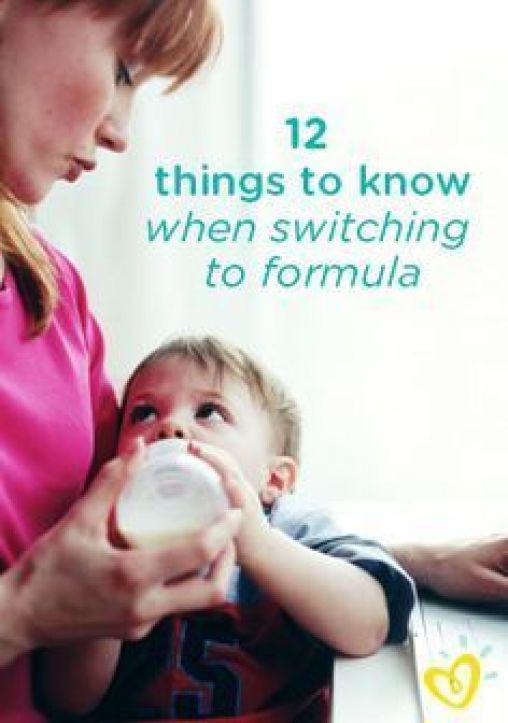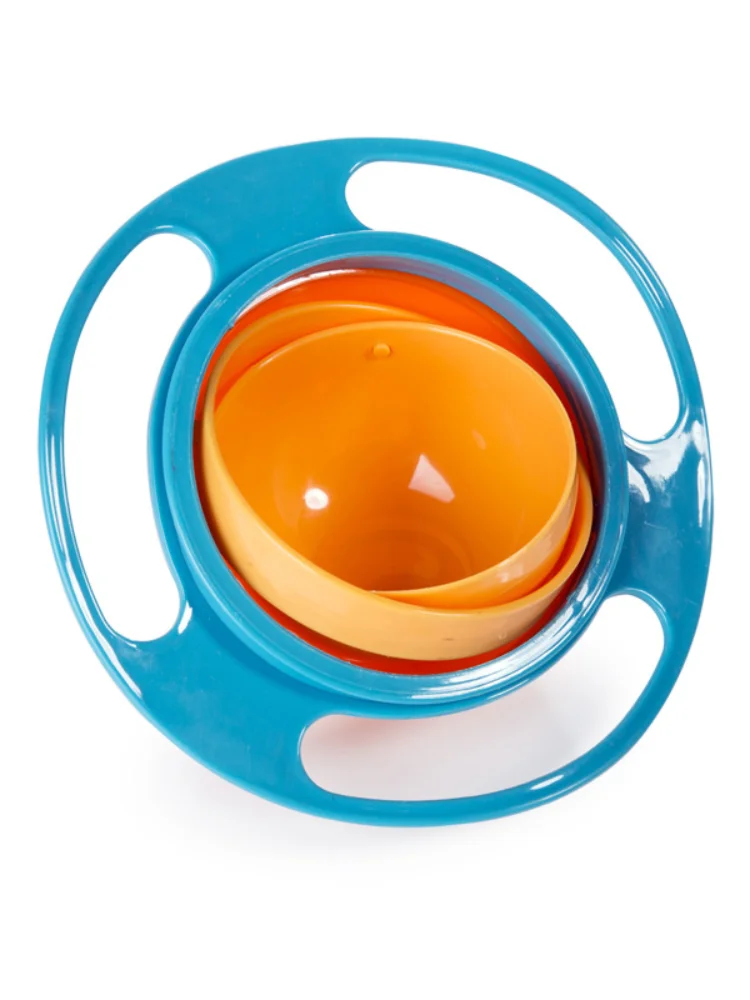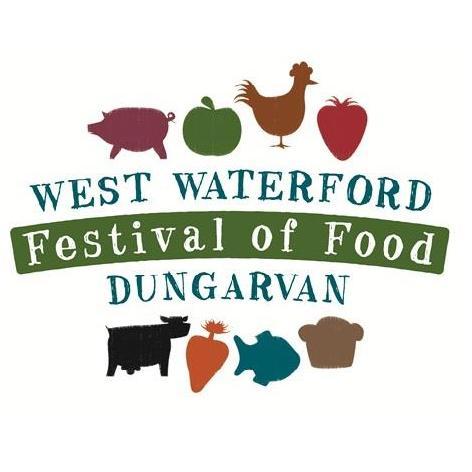Introduce finger foods babies
Best Finger Foods for Babies: The Ultimate Guide
How exciting that your baby is about to graduate from mushy foods to finger foods! This is a big step in your little one’s development. However, you may be wondering when’s the right time to start finger foods, and how to tell that your baby is ready. We’ll answer all these questions and more, plus give you a list of the best finger foods to introduce to your baby first.
Introducing Finger Foods to Your Baby
So, when can babies eat finger foods? You can start to give your baby finger foods around the time they’re able to sit up independently and can bring their hands to their mouth. This may happen between the ages of 8 months old and 9 months old, but your baby may be ready a little sooner or later than this time.
Around this time, you may also notice that your baby is developing their pincer grasp and may be making chewing motions. These are both great indications that your baby’s ready for finger foods. Moreover, using their fingers to pick up foods will further develop your baby’s fine motor skills.
Some parents who adopt the baby-led weaning approach may start offering finger foods to their infants as early as 6 months old. This method skips spoon-feeding with solid foods and instead lets your baby take the lead in self-feeding with finger foods. Some believe this approach can decrease fussiness when it comes to introducing new foods, including finger foods, to your baby. Speak to your child’s healthcare provider if this method is something you’d like to try.
Giving your baby finger foods can help your little one learn to feed themself, just one step toward gaining independence. Self-feeding can be great fun for your baby. Even if much of the food doesn’t end up in your baby’s mouth, the fact that they’re exploring this new frontier is an accomplishment to be proud of.
First Finger Foods for Your Baby
As you begin choosing finger foods for your baby, check out the following ideas:
Steamed veggies like sweet potatoes, potatoes, carrots, green beans, peas
Soft, ripe fruits like bananas, berries, peaches (peeled), mangoes (peeled)
Whole-grain breakfast cereals (without nuts, clusters, or chunks)
Whole-grain pasta (cooked well)
Whole-wheat bread
Whole-grain crackers or wafers like teething biscuits
Soft meats like chicken
Cheese (mild)
Scrambled eggs.
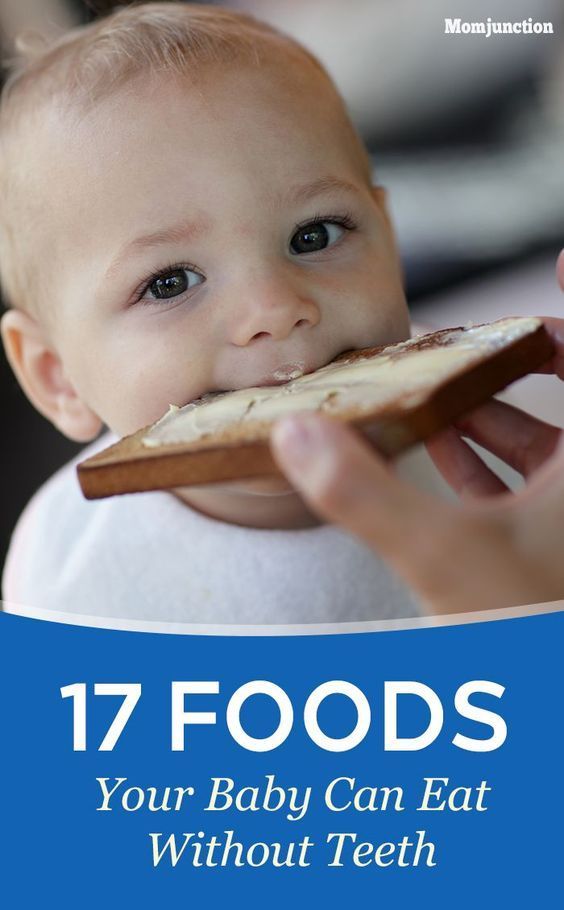
Be sure that any of the above finger foods are cut into small pieces. You don’t want your baby eating a piece that’s too big to swallow. And, make sure to watch them while eating.
Finger Food Safety
During this time babies are more likely to swallow foods without chewing them, whether they have a few baby teeth coming in or they have no teeth. Avoid giving any finger foods that require a grinding action to chew (this type of chewing is typically mastered around the age of 4), as these may pose a choking risk. Offer finger foods that are soft, easy to swallow, and broken or cut into pieces that your baby cannot choke on. A good rule of thumb is that soft and mushy finger foods are safe for your baby. Small, round, coin-shaped, hard, chewy, crunchy, slippery, or sticky foods may lead to choking. Here are some foods to avoid offering your baby when they start on finger foods:
Peanut butter (in chunks)
Meat (in chunks)
Cheese (in chunks)
Raw veggies (in large chunks or round shapes), including celery sticks, carrot sticks, baby carrots, cherry tomatoes, and peas
Raw hard fruit (in large chunks or round shapes), including apples, pears, and grapes
Nuts (whole)
Seeds
Popcorn
Chewing gum
Candies (hard, gooey, or sticky)
Hot dogs or meat sticks.

There are ways you can still give some of the above foods while making them easier to eat and less hazardous to swallow. For example:
Grapes or cherry tomatoes, cut in half
Creamy peanut butter spread thinly on whole-grain bread that’s cut into small squares
Hot dog, cut lengthwise and then cut into small 1/2-inch pieces.
Note on Food Allergies
Medical experts once recommended that parents avoid feeding their babies eggs, fish, and peanut butter since babies may be allergic to these foods. However, it’s now recommended that you introduce these foods early—while keeping a close watch for any reactions—since this approach can help reduce your child’s chances of developing food allergies. Before introducing peanut butter or peanut products, consult with your baby’s healthcare provider. Your baby is more likely to be allergic to these foods if
food allergies run in your family
your baby is known to have an egg allergy
your baby has eczema.
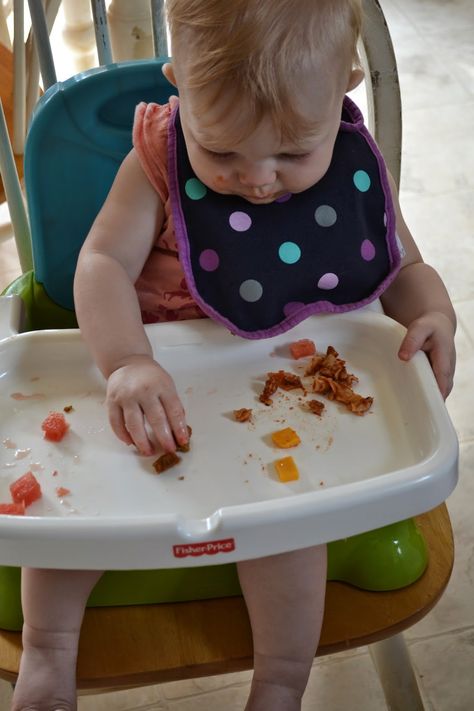
The Bottom Line
It’s time to introduce finger foods to your baby when you see that they’re able to sit up on their own, start bringing their hands to their mouth, and can use a pincer grasp to hold onto small items, like finger foods. This development happens around the age of 8 or 9 months old, but you may see it sooner or later in your baby.
In the beginning, you’ll want to introduce finger foods that are soft and easy to swallow, since babies at this age tend to swallow instead of chew even if they have a few baby teeth. Think steamed veggies and soft fresh fruits. You can also introduce whole-grain bread, crackers, cereal, or pasta if they’re cut into small pieces. Chicken, mild cheese, and scrambled eggs are also great options when served in small pieces.
Avoid hard foods like raw veggies and fruits, as well as chunks of nut butter, cheese, and meat. Whole nuts and seeds are not recommended, nor are chewing gum, candies, hot dogs, or meat sticks. All these items can pose a choking hazard.
All these items can pose a choking hazard.
Transitioning to finger foods is a big step in your baby’s development and independence. Letting your baby self-feed with finger foods may be a bit messy at first, but you’ll both get the hang of it. Learn more about developmental milestones for your 9-month-old baby.
Best Early Finger Foods for Baby (With Tips, Visuals, and Recipes)
Use this list of safe, nutritious, and easy to eat finger foods for baby to help you know exactly what (and how) to offer at meals and snacks. Plus, find the best first finger foods, troubleshooting tips, and visuals of foods broken down by food group to keep things easy!
Finger Foods for Baby
After baby starts solids and is ready to move onto finger foods, you may feel a little confused by exactly what to serve and how to serve it. Which is totally normal because it can be scary to let baby feed themselves this way and we may not have any experience doing this—or we may have totally forgotten from our last kiddo!
This list of finger foods for baby will cover some great first finger foods to start with, then set you up with plenty of healthy options from each food group.
TIP: Find more info on starting solids here and the best foods to start with if doing baby led weaning or purees with baby.
Healthy Baby Food
I love sharing these ideas for baby food since they are easy to prepare and serve and because I know how hard it can be to continue to come up with flavorful and healthy meals and snacks for our little ones. Let me tell you, I’m on my third kiddo and it can be such a challenge to feed him during the chaos of parenting the rest of my crew! These foods are wholesome and nutritious—perfect for your baby.
TIP: I’m a big fan of SpoonfulONE, a company that offers the most complete way to introduce food allergens to our kids. They make mix-ins, puffs, and crackers that are yummy and easy for babies and toddlers to eat. Learn more about their pediatrician-approved baby foods here. (sponsored link)
Best First Finger Foods
When baby is around 9 months, you’ll notice that they’re able to pick up smaller pieces of food with two fingers. This is known as the “pincer grasp” and is a sign that they’re ready to start finger foods. To be clear, when I say “finger foods” I mean small pieces of food that a baby (or toddler) can feed themselves.
This is known as the “pincer grasp” and is a sign that they’re ready to start finger foods. To be clear, when I say “finger foods” I mean small pieces of food that a baby (or toddler) can feed themselves.
Here are some of my favorite ones to start with that are all super soft, safe to eat, and easy to pick up.
- Scrambled egg, broken up into small pieces
- Roasted sweet potato mashed and broken up into small pieces
- Fresh raspberries, broken up into smaller pieces
- Oatmeal, cooked according to package directions and allowed to cool
- Tofu, diced and sauteed lightly or steamed
- Ground beef, chicken, or turkey, broken up into small pieces or lightly mashed meatballs
- Shredded cheese or crumbled goat cheese
- Mashed sweet potato, in little pieces
- Peanut butter puffs
TIP: You can serve the tofu, ground meat, or meatballs in veggie puree from a pouch or a simple marinara sauce for extra moisture and flavor. Learn more about how and why to introduce peanut butter.
Learn more about how and why to introduce peanut butter.
Finger Foods for Baby: Fruits and Veggies
Some of my favorite early fruits and veggies to serve babies are:
- Mashed roasted sweet potato, broken up into small pieces
- Warmed frozen peas, slightly mashed if desired
- Roasted Zucchini
- Diced Roasted Sweet Potato or Butternut Squash
- Fresh blueberries, cut in half or quarters
- Fresh raspberries, broken into small pieces
- Banana, broken into small segments (they are less slippery this way versus slicing them)
- Avocado, diced and mashed slightly (be sure it’s ripe and very soft)
TIP: A good rule of thumb is to serve pieces of food that are about the size of a pea to start and soft enough that they are easy to squish between your fingers. This will be easy for baby to pick up and eat and will also reduce chances of choking.
Finger Food Ideas: Carbohydrates
Offering complex carbohydrates can provide fiber, a variety of textures, B vitamins, and more.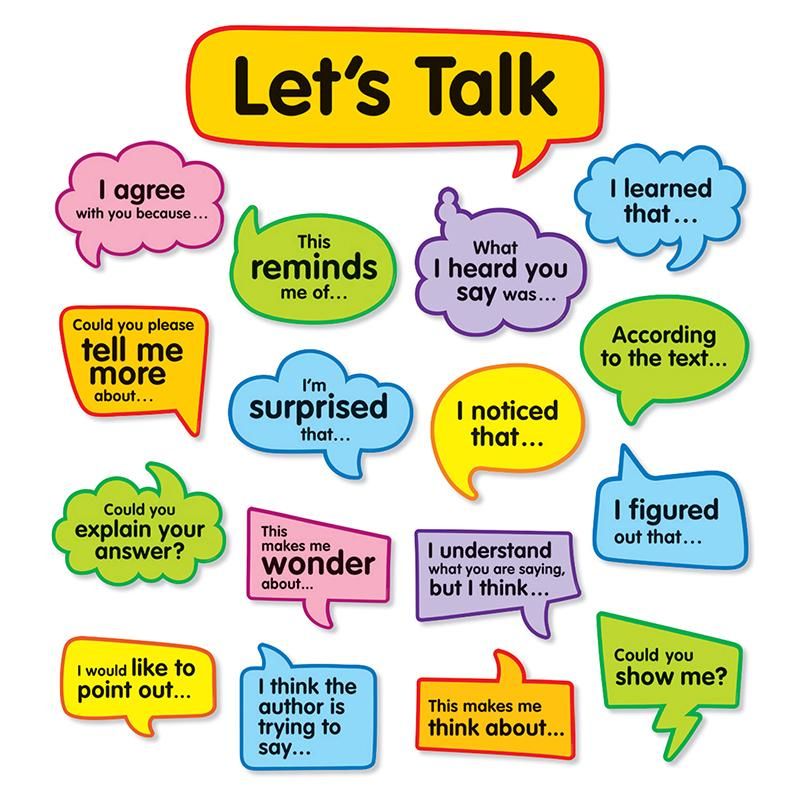 Try these with your baby.
Try these with your baby.
- Spinach pancakes (moisten with applesauce or plain yogurt if needed; this recipe is particularly moist and great for babies)
- Oatmeal, cooked according to package directions and allowed to cool
- Baby Puffs
- Peanut Butter Puffs
- Rice (it’s easiest if it’s in little clumps so baby can pick it up; this Coconut Rice or this Cheesy Rice are both good options)
- Baby Banana Muffin
- O cereal (soften in nondairy unsweetened milk or yogurt as needed)
- Baked Oatmeal, diced
Finger Food Ideas: Proteins
Offering proteins will continue to expose baby to a range of nutrients. These are my go-tos for babies newer to finger foods—and toddlers too.
- Shredded cheese (thicker cuts are a little easier to pick up)
- Tofu, diced and sauteed lightly or steamed
- Flaked cooked wild salmon
- Lightly mashed meatballs
- Shredded chicken, cut up finely (we love this Butter Chicken to share with baby)
- Ground beef, turkey, or chicken, broken into smaller pieces
- Lightly mashed beans
- Scrambled eggs, broken up into small pieces
- Diced egg muffins
I’d love to hear any questions you may have, or if you have foods that your babies enjoy that I didn’t include here.
 Chime in below in the comments!
Chime in below in the comments!Prep Time 5 minutes
Cook Time 5 minutes
Total Time 10 minutes
Author Amy Palanjian
Cuisine American
Course Baby Food
Calories 124kcal
Servings 1
First Finger Foods (choose 1-3 per meal)
- ▢ 1 Scrambled egg (broken up into small pieces)
- ▢ 1/4 cup Roasted sweet potato, mashed and broken up into small pieces
- ▢ 1/4 cup Fresh raspberries (broken up into smaller pieces)
- ▢ 1/4 cup Oatmeal (cooked according to package directions and allowed to cool)
- ▢ 2 tbsp Tofu (diced and sauteed lightly or steamed)
- ▢ 2 tbsp ground beef, chicken, or turkey, broken up into small pieces or lightly mashed meatballs
- ▢ 2 tbsp shredded cheese or crumbled goat cheese
- ▢ 1/4 cup Mashed sweet potato (broken into little pieces)
- ▢ 1/4 cup Peanut butter puffs
Fruits and Veggies
- ▢ 1/4 cup mashed roasted sweet potato (broken up into small pieces)
- ▢ 1/4 cup warmed frozen peas
- ▢ 1/4 cup Roasted Zucchini
- ▢ 1/4 cup diced Roasted Sweet Potato or Butternut Squash
- ▢ 1/4 cup blueberries (cut in half or quarters)
- ▢ 1/4 cup raspberries (broken into small pieces)
- ▢ 1/4 cup banana slices (broken into small segments—they are less slippery this way versus slicing them)
- ▢ 2 tbsp avocado (diced and mashed slightly—be sure it's ripe and very soft)
Whole Grains and Carbohydrates
- ▢ 1 Spinach pancakes (moisten with applesauce or plain yogurt if needed; this recipe is particularly moist and great for babies)
- ▢ 1/4 cup Oatmeal (cooked according to package directions and allowed to cool)
- ▢ 1/4 cup Baby Puffs
- ▢ 1/4 cup Peanut Butter Puffs
- ▢ 1/4 cup fully cooked rice (it's easiest if it's in little clumps so baby can pick it up; this Coconut Rice or this Cheesy Rice are both good options)
- ▢ 1 Baby Banana Muffin
- ▢ 1/4 cup O cereal (soften in nondairy unsweetened milk or yogurt as needed)
- ▢ 1/4 cup Baked Oatmeal (diced or regular oatmeal broken into little pieces)
Dairy
- ▢ 2 tbsp Shredded cheese (such as mozzarella)
- ▢ 2 tbsp Tofu (diced and sauteed lightly or steamed)
- ▢ 2 tbsp flaked cooked wild salmon
- ▢ 1 lightly mashed meatballs
- ▢ 2 tbsp finely shredded chicken (we love this Butter Chicken to share with baby)
- ▢ 2 tbsp ground beef, turkey, or chicken (broken into smaller pieces)
- ▢ 2 tbsp lightly mashed beans
- ▢ 1 Scrambled egg (broken up into small pieces)
- ▢ 1 Diced Egg muffins
For each meal or snack, choose 2-3 foods from a mix of food groups.
 Aim to include some fat in most meals and protein in many too.
Aim to include some fat in most meals and protein in many too.Prepare the food, cutting into small pieces and/or mashing as needed to make the food easy to eat.
Start with small portions and allow more as baby indicates according to their hunger.
- Store leftovers in an airtight container for 3-5 days in the fridge.
- Many foods you cook for your family will work as baby finger foods—just be sure they are easy to squish between your fingers and the pieces are small and easy to chew.
- Babies very normally make a lot of faces when they eat, so don't assume they don't like something just because they scrunch their nose!
- Flavors and textures can take time to learn to eat, so continue offering foods in small portions even if baby hasn't liked them in the past—and make sure they taste good to you!
Calories: 124kcal, Carbohydrates: 14g, Protein: 7g, Fat: 4g, Saturated Fat: 1g, Polyunsaturated Fat: 1g, Monounsaturated Fat: 2g, Trans Fat: 1g, Cholesterol: 164mg, Sodium: 81mg, Potassium: 344mg, Fiber: 4g, Sugar: 5g, Vitamin A: 9857IU, Vitamin C: 18mg, Calcium: 51mg, Iron: 1mg
Tried this recipe?Rate in the comments and tag @yummytoddlerfood on IG!
Finger games for the development of fine motor skills in a child | e1.
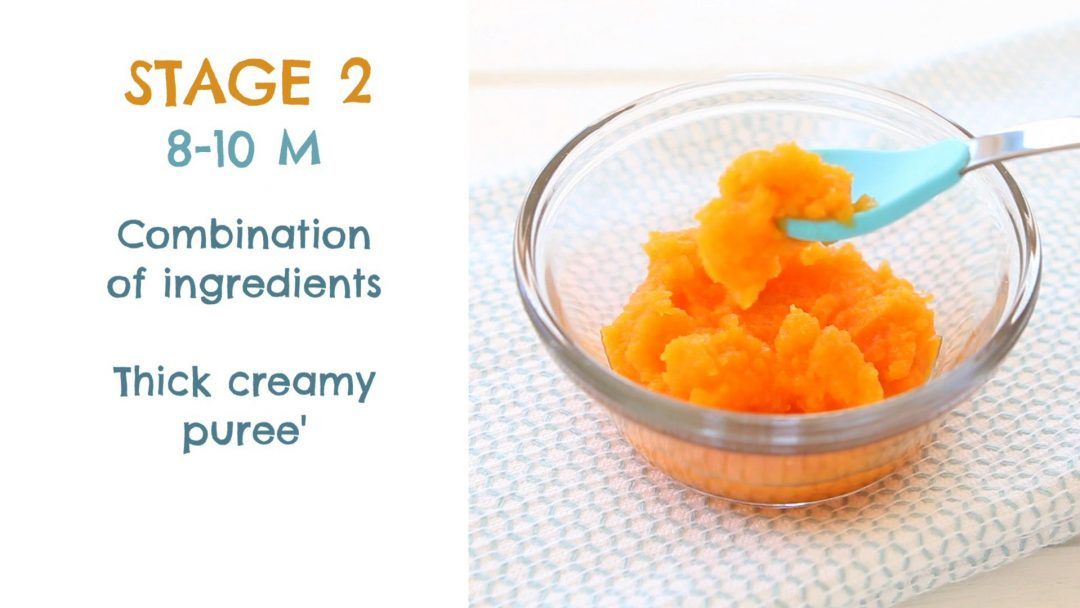 ru
ru A lot has already been written about the need to develop finger motor skills in children. It is known that such exercises are of great benefit: Scientists have proven that the development of motor skills of the hand is closely related to the development of speech and thinking of the child. Usually a child with a high level of development of fine motor skills is able to reason logically, he has developed coherent speech, memory and attention. Parents who pay attention to exercises and games for the development of fine motor skills and coordination of movements of the child’s hand solve two problems at once: firstly, they influence the overall intellectual development, and secondly, they prepare to master the writing skill, which in the future will avoid many problems school education. There are many finger games created in different cultures. In this article I want to introduce you to remarkably interesting Russian games:
Swallow, quail (Russian game)
The child's right hand rests on the adult's left hand. Slowly, quietly and affectionately, the adult says: swallow - and at the same time, with the fingers of his right hand, he leads the baby's thumb from base to tip. Then, with the same word, strokes the second finger of the baby. Having touched several fingers of the child in this way, the adult, without changing intonation, pronounces simultaneously with stroking: 'Quail'. The task of the child is to withdraw his hand as quickly as possible, since on the last syllable of this word the adult will grab him by the tip of his finger and start shaking him, happily saying: 'Caught, caught!' After the 'quail' 'was caught' or 'flew away', : the game continues with the other hand of the baby. Having mastered the game, the child himself often suggests a change of roles and with pleasure catches the “quail” - the finger of an adult. nine0003
Slowly, quietly and affectionately, the adult says: swallow - and at the same time, with the fingers of his right hand, he leads the baby's thumb from base to tip. Then, with the same word, strokes the second finger of the baby. Having touched several fingers of the child in this way, the adult, without changing intonation, pronounces simultaneously with stroking: 'Quail'. The task of the child is to withdraw his hand as quickly as possible, since on the last syllable of this word the adult will grab him by the tip of his finger and start shaking him, happily saying: 'Caught, caught!' After the 'quail' 'was caught' or 'flew away', : the game continues with the other hand of the baby. Having mastered the game, the child himself often suggests a change of roles and with pleasure catches the “quail” - the finger of an adult. nine0003
Kissel (Russian game)
Grandmother cooked kissel on a pea, Right hand ’stirs kissel’. The fingertips of the right and left hands are connected, the hands diverge at an angle. For Andryushka. The palm of the right hand rests on the chest. The falcon flew, the falcon flew. The palms are crossed, the thumbs are hooked on each other. Through the grandmother's threshold. Crossed palms flap like wings. Here he beat his wings, Grandmother's jelly spilled. The hands hit the sides hard several times, then stretch forward and down, the fingers spread out. So there is no jelly In the little skull Hands are spread apart. The hands again show the turtle pot. In the skull Rounded palms, descending, form a pot ~ repushka. At the old woman's on the pea. Hands up again. Grandma cries: 'Ai-ai-ai' Don't cry, grandma, don't cry! The index finger of the right hand 'threatens' So that you become cheerful We will cook jelly. So much! The right hand again stirs the jelly ’ Hands diverge widely to the sides. nine0003
For Andryushka. The palm of the right hand rests on the chest. The falcon flew, the falcon flew. The palms are crossed, the thumbs are hooked on each other. Through the grandmother's threshold. Crossed palms flap like wings. Here he beat his wings, Grandmother's jelly spilled. The hands hit the sides hard several times, then stretch forward and down, the fingers spread out. So there is no jelly In the little skull Hands are spread apart. The hands again show the turtle pot. In the skull Rounded palms, descending, form a pot ~ repushka. At the old woman's on the pea. Hands up again. Grandma cries: 'Ai-ai-ai' Don't cry, grandma, don't cry! The index finger of the right hand 'threatens' So that you become cheerful We will cook jelly. So much! The right hand again stirs the jelly ’ Hands diverge widely to the sides. nine0003
Related
GamesChild DevelopmentEarly Development
- LIKE0
- LAUGHTER0
- SURPRISE0
- ANGER0
- Typing
Select a fragment and click Ctrl+Enter
Comments0
Guest
Enter
RARIRARѕSAS MARM? 2
RARIRARѕSM, Ryr, Ryr, “finger” menu and examples of dishes: age recommendations and examples of the child nine0002 Home Children "Finger" food: at what age to give the baby and what dishes to cook
Any food in the form of pieces that a child can independently take in his hand and easily eat is called "finger" food.
 Such nutrition is a great pleasure for the baby and a very important step towards his independence. In addition, "finger" food helps the baby develop fine motor skills and coordination. Therefore, it is important to figure out how to properly introduce such healthy food into the children's diet and from what foods to prepare interesting treats for the baby. nine0003
Such nutrition is a great pleasure for the baby and a very important step towards his independence. In addition, "finger" food helps the baby develop fine motor skills and coordination. Therefore, it is important to figure out how to properly introduce such healthy food into the children's diet and from what foods to prepare interesting treats for the baby. nine0003 At what age can you give finger food to a child?
You will know when your baby is ready for finger food. The baby can already eat without outside help if:
- starts snatching the spoon from your hands with which you feed him;
- looks into the adults' plate with interest.
According to experts, this usually occurs at the age of 8-9 months.
Pay attention! Some parents introduce finger foods as early as 6 months of age. They begin to teach the baby to feed on their own not with a spoon, but with their fingers, allowing the baby to take soft pieces of food and chew.
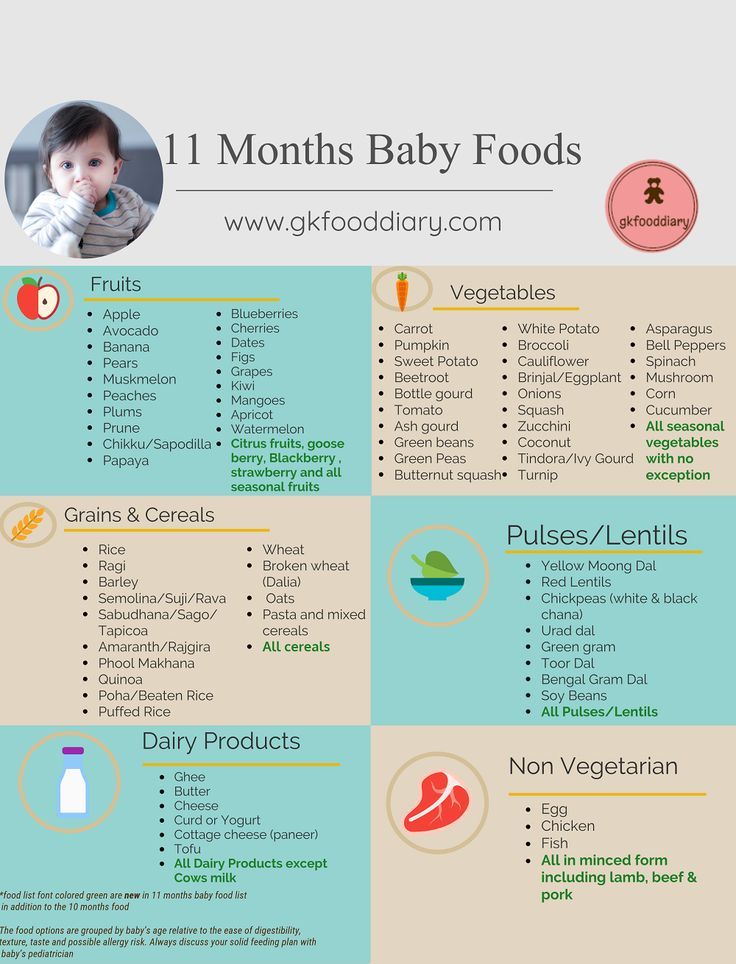 nine0003
nine0003 Do not be surprised if at first the child rather clumsily takes the food in his hand and brings it to his mouth. Over time, he will master a new fine motor skill and understand how to properly hold food with his thumb and forefinger.
How to offer finger food to a child for the first time?
If your baby eats in a highchair, place four or five finger-sized pieces on the table. Perhaps it will be more interesting for the baby to take food from the dishes - then use an unbreakable plate. When the child has eaten everything, add a few more slices of food. nine0003
Pediatricians recommend that parents feed their baby in a special high-backed highchair rather than in a car seat or stroller. So you will not be afraid that the child may choke on food. And the baby will very quickly get used to the fact that the high chair is a place for eating.
What are the best foods for finger food?
What should be considered by a mother who has decided to introduce finger food to her baby?
- Even if your child has a good appetite, he still has very few milk teeth.
 Therefore, it is important at first to give the baby foods that are easy to chew on the gums or dissolve in the mouth. After the baby is one year old, you can already offer him more solid pieces of food. nine0022
Therefore, it is important at first to give the baby foods that are easy to chew on the gums or dissolve in the mouth. After the baby is one year old, you can already offer him more solid pieces of food. nine0022 - Put a wide variety of foods on the baby's table: while feeding, the baby learns to distinguish food by structure, color and aroma.
- Resist the temptation to give your little one sweets, such as cookies and cakes, or foods that are too fatty, such as cheese puffs and chips. A child needs nutrient-dense food, not empty calories.
- Try to offer your baby food that is comfortable for him to take with his fingers. But never forget the danger of suffocation! Cook vegetables until they are completely soft, and cut absolutely all foods into small pieces. Even a grape is still too big for a child and can be dangerous. nine0022
- Be sure to choose food that is appropriate for your baby's age. Previously, experts believed that eggs, fish, or peanut products should not be given to young children because of the increased risk of food allergies.
 But recent studies by experts from the American Academy of Pediatrics have shown that allergic reactions have nothing to do with the early introduction of these products into the children's diet.
But recent studies by experts from the American Academy of Pediatrics have shown that allergic reactions have nothing to do with the early introduction of these products into the children's diet.
Important! Peanut butter is still a banned product in baby food. The sticky texture of such food carries a potential choking hazard. nine0022 - Some pediatricians advise mothers to be very careful when introducing new foods to their baby. If you suspect that a child may be allergic to certain types of food, introduce them into the diet one by one and monitor the condition of the baby.
Options for the perfect finger food
If you use your imagination, you can come up with a lot of dishes for a baby that he can eat without the help of adults. To make it easier for you, we have compiled a whole list of "finger" snacks:
- ready-to-eat oatmeal in the form of rings or any other low sugar;
- small slices of toast or bagels - if you spread them with vegetable puree, you get a healthy snack for the crumbs;
- small pieces of banana or other ripe and pitted fruit.
 Mango, plum, pear, peach, melon or watermelon are perfect;
Mango, plum, pear, peach, melon or watermelon are perfect; - small cubes of soy or other soft cheese;
- well-cooked pasta coils, cut into pieces; nine0022
- hard-boiled egg slices;
- pieces of boiled prunes;
- small slices of vegetables cooked until soft: carrots, peas, zucchini, potatoes;
- small florets of broccoli or cauliflower;
- pea-sized pieces of soft meat - boiled chicken or turkey, ground beef.
Conclusion
As you can see, finger food has many benefits and is very easy to prepare. Do not miss the moment when your baby is ready for such nutrition - it is very important for his development. Be prepared for the fact that the baby can get dirty with “finger” food or drop it on the floor. Clean up after the baby in time, and let him continue to have fun during the meal, while training fine motor skills. nine0003
SOURCES
AAP. Getting started with solid food.
 American Academy of Pediatrics. https://www.healthychildren.org/English/ages-stages/baby/feeding-nutrition/Pages/Switching-To-Solid-Foods.aspxAmerican Academy of Pediatrics. The impact of early dietary interventions on the development of atopic disease in infants and children: the role of maternal dietary restriction, breastfeeding, timing of complementary foods, and hydrolyzed formulas. Pediatrics 121(1): 183-91. http://pediatrics.aappublications.org/content/121/1/183.full Mayo Clinic. Solid food: how to have a baby. http://www.mayoclinic.com/health/healthy-baby/PR00029 Nemours Foundation. Finger Foods for kids. http://kidshealth.org/parent/pregnancy_newborn/feeding/finger_foods.html
American Academy of Pediatrics. https://www.healthychildren.org/English/ages-stages/baby/feeding-nutrition/Pages/Switching-To-Solid-Foods.aspxAmerican Academy of Pediatrics. The impact of early dietary interventions on the development of atopic disease in infants and children: the role of maternal dietary restriction, breastfeeding, timing of complementary foods, and hydrolyzed formulas. Pediatrics 121(1): 183-91. http://pediatrics.aappublications.org/content/121/1/183.full Mayo Clinic. Solid food: how to have a baby. http://www.mayoclinic.com/health/healthy-baby/PR00029 Nemours Foundation. Finger Foods for kids. http://kidshealth.org/parent/pregnancy_newborn/feeding/finger_foods.html
- TAGS
- children
- baby food
Previous articleHow love blossoms between mother and child
Next articleHow to work when a child is sick: tips for successful moms
Anna
Hello! My name is Anna. I am inquisitive and positive.

Learn more



